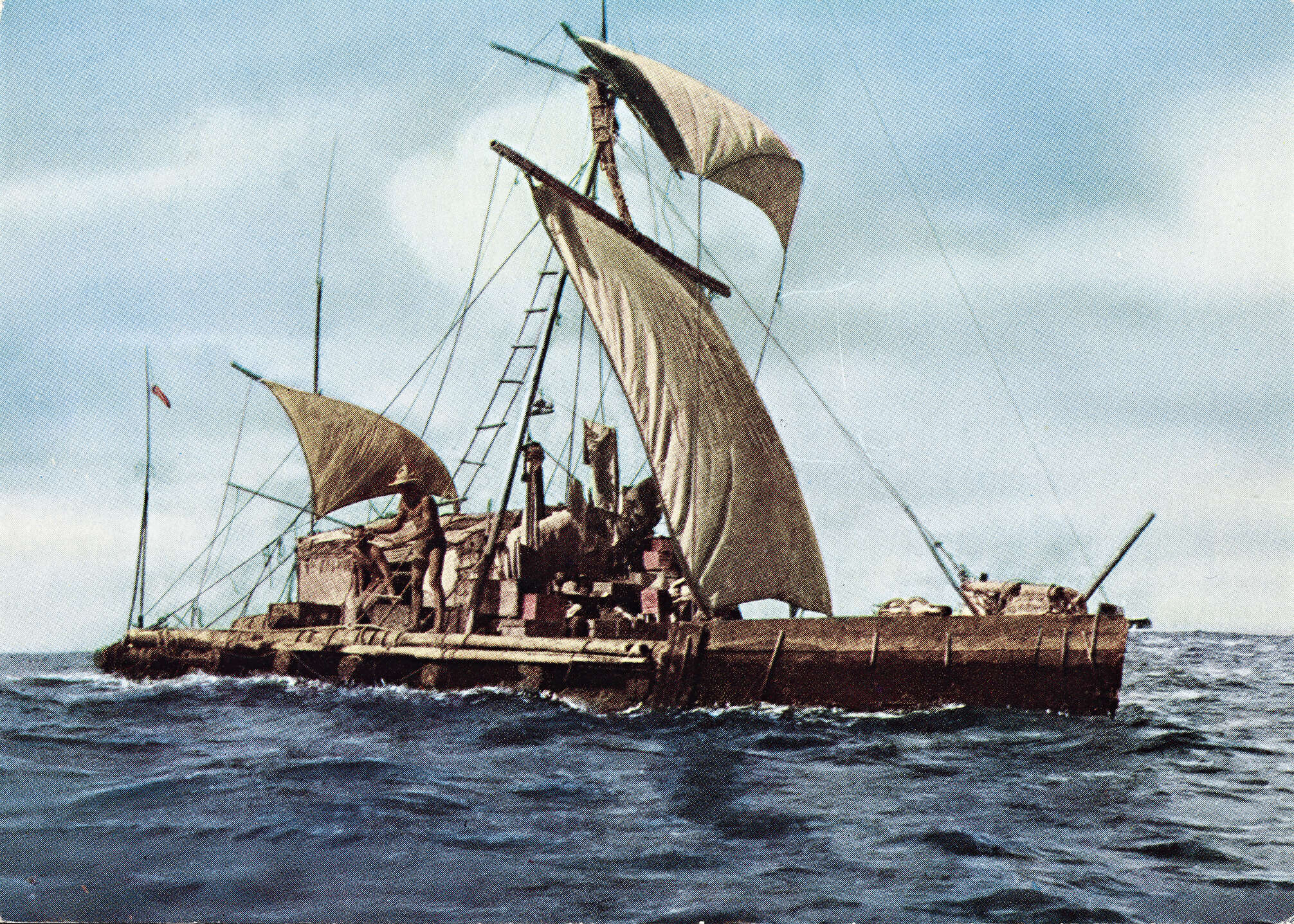
1947 Kon-Tiki Expedition across the Pacific © National Library of Norway
The voyage of the Kon-Tiki was one of the greatest DIY experiments of the 20th century, proving that six young scientists, using primitive technology and sheer foolhardy belief, could traverse the Pacific Ocean on a homemade balsa wood raft.
One of these daring explorers was Thor Heyerdahl, a charismatic experimental anthropologist from Norway who believed that borders exist only in the mind of some people. Writer, illustrator, photographer, archaeologist, ethnologist – Thor Heyerdahl’s curriculum is beyond impressive. His fascination with nature, animals and the natural sciences started from a very young age. At 6 years old, he was already drawing images of islands in the South Sea, certain that he would become an explorer once he grew up; and at 16, he was telling his classmates he would one day solve the mystery of Easter Island. He was right, on both counts.
His expeditions started on a local scale, exploring Norway’s mountainous regions and writing for various publications – his articles being accompanied by his own photographs or line drawings and very quickly becoming an authority for outdoor enthusiasts. He was also studying zoology. He always yearned for more and for the unknown. And when he met Bjarne Kroepelien, who had travelled to Polynesia and brought back to Oslo an extensive collection of books on the destination, Thor knew it was time to sail away. He just needed the right companion.
Thor met his wife and very quickly realized they both shared a desire to escape Western civilization and return to nature. As soon as they married, they sailed to French Polynesia and Tahiti, where they met with an indigenous Chief and made various discoveries that led to Thor forming the theory that indigenous South American peoples were the first to populate Polynesia, specifically Easter Island. But how to go about proving it?

Replica of Ra II, Kon-Tiki Museum © Ralf Roletschek
When they returned to Norway, Thor found himself at odds with the prevailing Pacific Ocean research theories in the scientific community. The main argument against his idea was that the indigenous people of South America did not have sturdy enough boats (or rafts) that could carry them all the way to Polynesia. So, Thor decided to build Kon-Tiki, a balsawood raft, and retrace their steps. On April 28, 1947, Thor and his crew of five left the coast of Peru, and after 101 days in open waters and 6,900 km, actually reached the Tuamotu Islands in Polynesia.
The voyage’s success was a worldwide event and made Thor Heyerdahl a household name. However, he still needed concrete proof that the indigenous people of South America had also made this journey. He sailed again, this time to the Galápagos Islands, along with two archaeologists, to carry out excavations. Among their findings were shards of prehistoric South American pottery and an Incan flute.
He did not stop there. A couple of years later, he sailed to Easter Island, where he discovered an engraving on one of the island’s iconic stone statues. The engraving depicted a boat with sails, similar to boats depicted on several objects in South America. During the same expedition, he also tried moving a 15-ton stone statue, upright, using rope – and succeeded, thus proving how the natives were transporting the statues around the island all those hundreds of years ago. Although his first claim that the first people to arrive on Easter Island has now been disputed by more recent findings, Heyerdahl’s research into the island’s prehistory remains of incremental value.

Left: Thor Heyerdahl ca. 1980
Right: Easter Island
Heyerdahl took part in many more expeditions and is the father of maritime experimental archaeology. He was also passionate about working towards global peace and fighting environmental pollution, both causes that took him around the world in an attempt to share his belief that we are all, fundamentally, one people. In his later years, he became a scholar, publishing many books and over fifty scholarly articles.
2022 marks the 75th Anniversary of the Kon-Tiki expedition. The Kon-Tiki Museum in Oslo, Norway houses vessels and maps from the Kon-Tiki expedition.
Discover French Polynesia on Special Travel International’s upcoming tour:
On the Horizon for 2024-25
Travel the world with like-minded people, and discover how much shared enthusiasm increases your enjoyment of experiences tailored to your interests. All while you enjoy all the comfort and reassurance of traveling in a group. We believe in making extraordinary memories with friends, exceptional service and ethical business conducted with proven local partners.
Special Travel crafts unique tours for choirs, sport teams and many other special interest groups.
Contact Email
CLASSICAL MUSIC PLATFORM
Find out more about our artists and Classical Music partners
Click Here